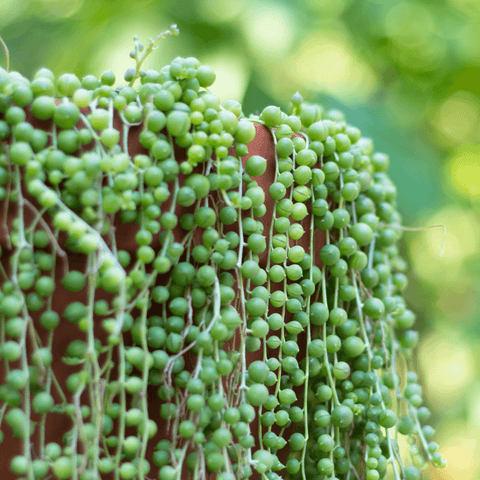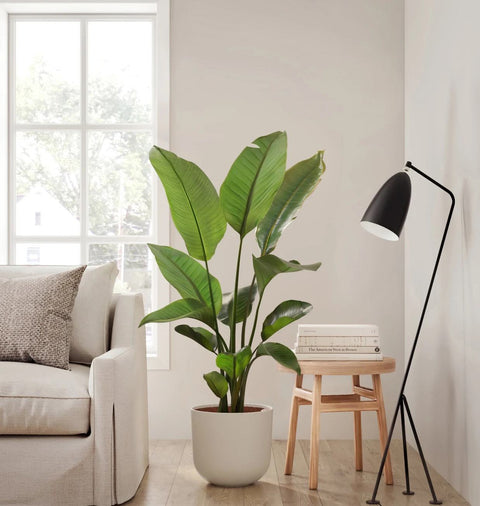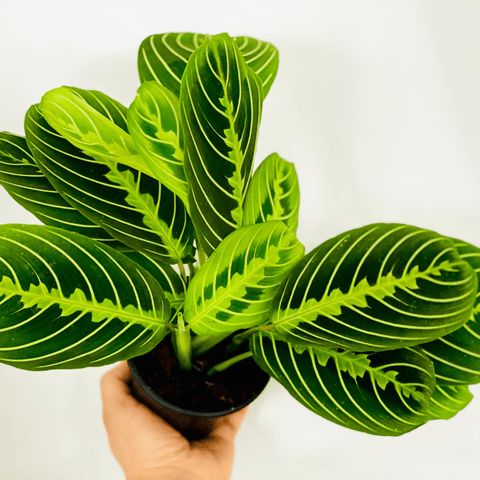The String of Pearls (Senecio rowleyanus) is the perfect plant for busy gardening enthusiasts! Native to the deserts of Africa, this stunning succulent has become a popular houseplant in recent years. But how do you properly care for it?
This guide will provide you with everything you need to know about caring for your String of Pearls plant, from essential soil and water requirements to easy propagation tips. So, if you want to keep your String of Pearls healthy, vibrant, and beautiful, read on to discover the ultimate guide to caring for the String of Pearls plant.
What is a String of Pearls Plant?
The String of Pearls plant, also known as 'Senecio Rowleyanus,' is an eye-catching trailing succulent with delicate green leaves that resemble a string of beads. It is native to the arid Namib desert in Southwest Africa and is a highly hardy houseplant, requiring little to no maintenance. This makes it a popular choice for homeowners looking to beautify their space with low effort. A String of Pearls plant can provide years of lush beauty with proper care.
Light and Position
When caring for a string of pearls plant, one of the most important things to consider is the amount of light and the position the plant is placed in. Like many other houseplants, string of pearls plants prefers bright, indirect light. However, fluorescent lights are also suitable for providing light for your plant, as long as it is a few inches away from the light source. To ensure your plant is getting a sufficient amount of light, place your string of pearls in a south-facing window where it will receive the most sunlight throughout the day. If you are still determining the correct placement, check the leaves for signs of yellowing, as it can indicate too little light.
Soil and Water Requirements
To survive, the string of pearls plant requires very little soil and water. The soil should drain well, and the plant should be watered sparingly, allowing the soil to dry out between waterings. Too much water can lead to root rot and fungus, so it's essential only to give it what it needs. It's best to place the plant in a pot slightly larger than the root ball and filled with a soil mix specifically formulated for cacti and succulents. The plant should be watered once every 7-10 days, and the soil should be allowed to dry out between waterings. Finally, hold off on fertilizing the plant until it is well established.
Fertilizer and Pruning
Fertilizer and pruning are essential components of caring for a String of Pearls plant. Fertilizing once every two to three months with a liquid or water-soluble fertilizer will provide the plant with the nutrients it needs to grow. Remove any dead or damaged leaves and stems to keep the plant healthy. Pruning should be done in early spring before the plant grows actively. When pruning, always use sterilized tools to prevent the spread of disease. These simple tips can help ensure your String of Pearls remains healthy and displays its trademark beautiful trailing foliage.
Pests and Diseases
When it comes to your String of Pearls plant, it's essential to be aware of potential pests and diseases. Generally, this plant is pest-resistant, but you should still be looking for mealybugs, aphids, and spider mites. Aphids and mealybugs can be controlled by spraying your plant with a mild insecticidal soap solution. If you have spider mites, you can either use a pesticide or introduce natural predators, such as ladybugs. Regarding diseases, String of Pearls plants are prone to root rot. This can be caused by overwatering or poor drainage, so ensure to provide your plant with well-draining soil and only water when the soil has dried out. If your plant does develop any signs of disease, you can try treating it with a fungicide. Be sure to take all necessary precautions when using any chemical treatments, and always read and follow the directions carefully.
Propagation Tips
If you want to propagate your string of pearls houseplant, it's a simple process. All you need is a pair of sharp, sterile scissors and a few cuttings. Take several cuttings, including several leaves and the stems, and then prepare the bottom by snipping off the lower leaves. Place the cut end in the cutting in potting soil, and water the soil to keep it moist. The cuttings should take root after a few weeks, with proper care and attention. Transplant the rooted cuttings into individual pots to give them room to grow. With a few simple steps, your string of pearls can become lush and full.
Conclusion
In conclusion, caring for your String of Pearls plant is straightforward and not too complicated. It is an easy-care plant that does well in bright indirect sunlight and requires very little water. Ensure that you are fertilizing your String of Pearls once a month with a balanced fertilizer and pruning it regularly to keep its shape. Keep an eye out for pests and diseases, as they could affect your plant's health. Finally, if your plant gets too big, you can quickly propagate it by separating the strands and potting them into individual plants. With the proper care and attention, your String of Pearls plant will thrive and keep putting on a show year-round!





Comments (0)
There are no comments for this article. Be the first one to leave a message!